☆ PuniPuni Youtube ☆
Japanese Grammar – て- Form + いる – Part 2 – Review Notes
Last lesson, we learned how to use the て-form (te-form) of verbs plus いる (iru) to express ongoing actions, repeated actions, and resultant states in Japanese.
This time, we will learn how to conjugate this pattern into past tense and negative form!
………………………………………………………………………………..
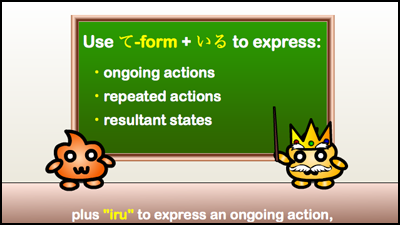
★ Last lesson, we learned how to use the て-form (te-form) of verbs plus いる (iru) to express ongoing actions, repeated actions, and resultant states in Japanese!
★ If you missed our last Japanese grammar lesson, click here!

★ Today we will learn how to conjugate this pattern to the negative form and past tense.
………………………………………………………………………………..
How to Conjugate to other tenses/forms:
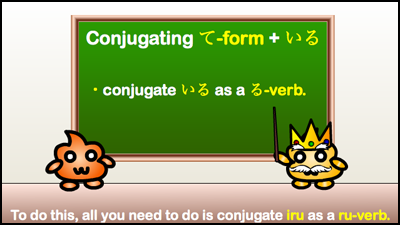
★ To change the tense of this pattern, just conjugate いる (iru) as a る-verb (ru-verb). If you don’t know how to conjugate Japanese verbs, check out our previous grammar lessons.
Introduction to Japanese verb types
………………………………………………………………………………..
Present Progressive Tense:
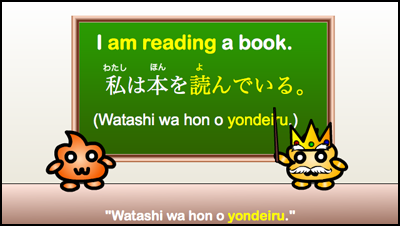
★ Last time, we learned that one of the ways that the て- form + いる (iru) pattern is used is to express ongoing actions.
………………………………………………………………………………..
Conjugating to Past Tense:
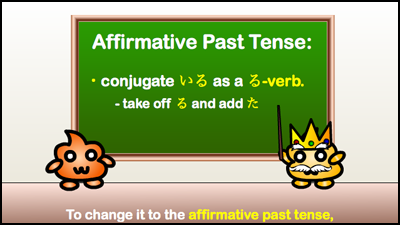
★ To change it to affirmative past tense, just take off る (ru) and addた (ta).

★ Doing this changes the verb to 読んでいた (yondeita – was reading).
………………………………………………………………………………..
Conjugating to Negative Present Tense:
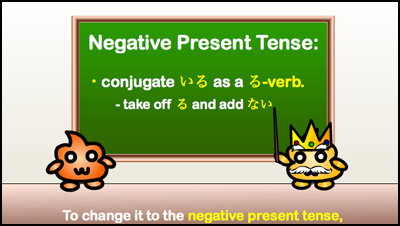
★ To conjugate the verb to negative form, take off る (ru) and add ない (nai).
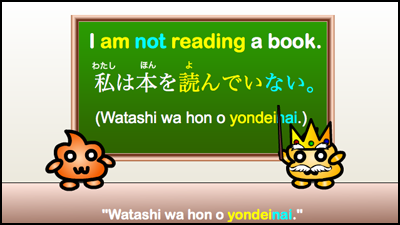
★ Doing so changes the verb to 読んでいない (yondeinai – not reading).
………………………………………………………………………………..
Conjugating to Negative Past Tense:
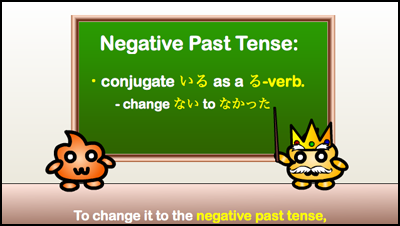
★ To conjugate the verb to negative past tense, change ない (nai) and add なかった (nakatta).
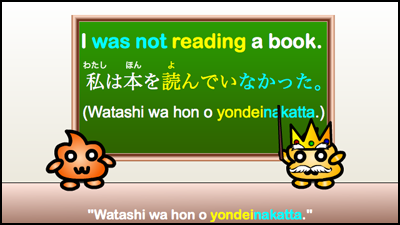
★ Doing so changes the verb to 読んでいなかった (yondeinakatta – was not reading).
………………………………………………………………………………..
Additional Information:
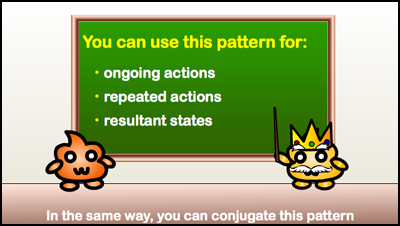
★ Today’s video focused on an example of an ongoing action.
★ However, you can use the same conjugations when expressing repeated actions or resultant states with て-form + いる.
………………………………………………………………………………..
Repeated Action Pattern – Example Sentence:
……………………………………………………………………………….
私は日本語学校に行っている。
Watashi wa nihongo gakkō ni itteiru.
I go to a Japanese language school.
(I am going to a Japanese language school.)
……………………………………………………………………………….
私は日本語学校に行っていた。
Watashi wa nihongo gakkō ni itteita.
I went to a Japanese language school.
(I was going to a Japanese language school.)
……………………………………………………………………………….
私は日本語学校に行っていない。
Watashi wa nihongo gakkō ni itteinai.
I don’t go to a Japanese language school.
(I am not going to a Japanese language school.)
……………………………………………………………………………….
私は日本語学校に行っていなかった。
Watashi wa nihongo gakkō ni itteinakatta.
I didn’t go to a Japanese language school.
(I was not going to a Japanese language school.)
………………………………………………………………………………..
Resultant State Pattern – Example Sentence:
……………………………………………………………………………….
田中さんは結婚している。
Tanaka san wa kekkon shiteiru.
Mr. Tanaka is married.
……………………………………………………………………………….
田中さんは結婚していた。
Tanaka san wa kekkon shiteita.
Mr. Tanaka was married.
……………………………………………………………………………….
田中さんは結婚していない。
Tanaka san wa kekkon shiteinai.
Mr. Tanaka is not married.
……………………………………………………………………………….
田中さんは結婚していなかった。
Tanaka san wa kekkon shiteinakatta.
Mr. Tanaka was not married.
……………………………………………………………………………….
Conclusion:
That’s it for today’s Japanese grammar lesson! If you have any questions, please leave a comment below!
……………………………………………………………………………….
Do you want a Japanese tutor?
Take Japanese Skype Lessons with Professional Japanese Teachers on kakehashijapan.com!
………………………………………………………………………………..
………………………………………………………………………………..









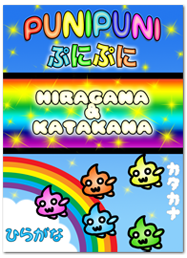
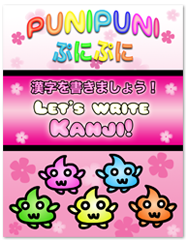


2 comments
Is there any easier any to remember ta-form and te-form?
Comment by Puppix on 07/24/2014 at 12:00 pm^Look up “te-form songs” on youtube. They’re very memorable.
Comment by Reckard on 10/20/2014 at 11:39 am